Country guides

Things to do in Cyprus
While the fascinating history of Cyprus is worth exploring, many tourists come to enjoy the country's beautiful beaches and resorts. Cyprus is home to 49 Blue Flag beaches, where snorkelling and scuba diving, waterskiing, quad biking, and windsurfing are all on offer. The top beaches have excellent facilities, with restaurants and bars, hotels, and other amenities within easy reach of those on the shore.
Steeped in ancient culture, it's no wonder Cyprus offers some of the most exciting and fascinating sightseeing opportunities in Europe. Highlights include a visit to the Cyprus Museum in Nicosia to view artefacts dating back over 8,500 years, as well as exploring the site of the first discovered Neolithic ruins of Choirokoitia, just north of Larnaca.
Tourists can also marvel at the striking mosaic floors in Paphos, dating from the third century AD, before visiting the mystical catacombs of Agia Solomoni Church, where visitors are greeted by a pistachio tree laden with pieces of cloth.
Another favourite for visitors is taking a romantic excursion from Paphos to visit the natural grotto on the Akamas Peninsula near Polis, 30 miles (48km) north of Paphos. Legend has it that the Greek goddess of love, Aphrodite, used to take her baths in the waters.
The public transport system in Cyprus is reliable enough to get to most major cities. However, one of the best ways to get a real feel for the country and to explore everything it has to offer is to hire a car or moped and take a leisurely tour.
Cyprus Archaeological Museum
The Cyprus Archaeological Museum was established to collect, study, and display archaeological artefacts from all over the island. Located at a different site, the first museum was…
Cyprus Archaeological Museum
The Cyprus Archaeological Museum was established to collect, study, and display archaeological artefacts from all over the island. Located at a different site, the first museum was established in 1888 and some of the exhibits are some 8,500 years old. The museum is arranged in chronological order: the first hall contains pottery and implements from the Neolithic and Chalcolithic periods whilst the other rooms trace the history of Cyprus through the Bronze Age, Hellenic Period, Mycenaean times, Roman Period, and early Byzantine. A unique feature of the museum lies in the basement where several graves rest in a dark cellar, complete with skeletal remains and reconstructed adornments.
Website www.nicosia.org.cy/en-GB/discover/museums/cyprus-museum/
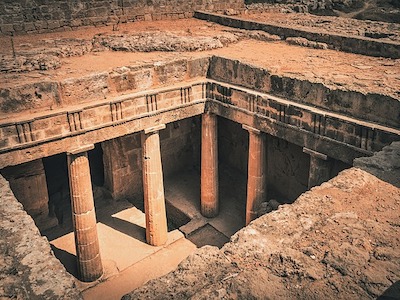
Tombs of the Kings
There is no royalty buried in the Tombs of the Kings, a grand mausoleum found one mile (2km) northwest of Paphos Harbour towards Coral Bay. Rather, it's the final resting place of …
Tombs of the Kings
There is no royalty buried in the Tombs of the Kings, a grand mausoleum found one mile (2km) northwest of Paphos Harbour towards Coral Bay. Rather, it's the final resting place of about 100 Ptolemaic aristocrats who lived and died in the city between 3 BC and 3 AD. The tombs are carved into the solid rock of the cliff above the sea and are beautifully situated, with some featuring Doric pillars and frescoed walls. Archaeological excavations are ongoing at the site, which also features a church known as Paleoekklisia, sporting traces of Byzantine frescoes. The Tombs of the Kings usually feature very high in tourist reviews of Paphos and are thrilling to discover.
Website www.visitcyprus.com/index.php/en/discovercyprus/culture/sites-monuments/253-tombs-of-the-kings
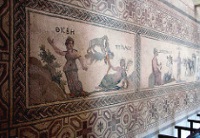
The Mosaics of Paphos
The Mosaics of Paphos are a series of striking floors in a number of ancient Roman villas, dating from the 3rd to the 5th centuries. The sites are still being excavated on around 3…
The Mosaics of Paphos
The Mosaics of Paphos are a series of striking floors in a number of ancient Roman villas, dating from the 3rd to the 5th centuries. The sites are still being excavated on around 300 metres from the Paphos Harbour. The mosaics featuring mythological scenes are visible in the Houses of Dionysos, Orpheus, Aion, and the Theseus. There are also stunning mosaics to be seen in the House of Four Seasons. All the mosaics were made from small cubes of marble and stone, called tesserae, with glass paste added to widen the range of colour.
Website www.visitcyprus.com/index.php/en/discovercyprus/culture/sites-monuments/246-pafos-paphos-mosaics

Agia Solomoni Catacombs
A large pistachio tree marks the entrance to the underground catacombs of Agia Solomoni in Kato Paphos. A strange sight, it's usually festooned with cloth tied onto it by the faith…
Agia Solomoni Catacombs
A large pistachio tree marks the entrance to the underground catacombs of Agia Solomoni in Kato Paphos. A strange sight, it's usually festooned with cloth tied onto it by the faithful as offerings in the hope the sacred tree will cure various ailments. The catacombs were carved into Fabrica Hill in the 4th century BC, below the ancient Roman wall. Underground chapels feature frescoes and graffiti left by 13th century crusaders, and there are numerous legends and stories attached to the patron saint Ayia Solomoni. There's little to no guidance or information on offer at the site, so it's best that visitors do some research before going to understand what they're looking at.
Website www.cyprusisland.net/churches/agia-solomoni-church-and-catacombs
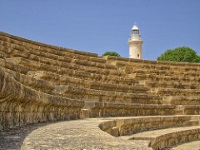
Acropolis
Located near the modern Paphos Lighthouse, the Cypriot Acropolis is a complex of ancient buildings that includes a 2nd century Roman odeon restored and now used for summer orchestr…
Acropolis
Located near the modern Paphos Lighthouse, the Cypriot Acropolis is a complex of ancient buildings that includes a 2nd century Roman odeon restored and now used for summer orchestral and stage performances. South of the odeon are the remnants of the Roman Temple of Asclepius, the god of medicine, and north of the lighthouse are the ruins of the ancient town walls. One of Cyprus's world-renowned ancient treasures is the stunning set of mosaics of the acropolis near the harbour. These incredibly well-preserved artworks often top the list of Cyprus attractions and have been delighting visitors for decades.
Website www.cyprusisland.net/attractions/paphos-acropolis-odeon
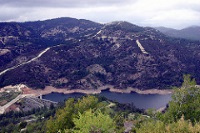
Troodos Mountains
Within the interior of Cyprus and north of Limassol, the Troodos Mountains offer beautiful scenery, ski trails, and walks for nature lovers. The Troodos Mountains are the largest m…
Troodos Mountains
Within the interior of Cyprus and north of Limassol, the Troodos Mountains offer beautiful scenery, ski trails, and walks for nature lovers. The Troodos Mountains are the largest mountain range in Cyprus, so it is no wonder that they are also a popular winter destination. They are one of only a handful of places in the world where visitors can ski in the morning, and swim and sun tan in the afternoon. The main ski slopes are on the 6,401 foot (1,951m) Mount Olympus, roughly an hour's drive from Nicosia or Limassol, and the ski season extends from the beginning of January to the end of March.
Website www.mytroodos.com/en/
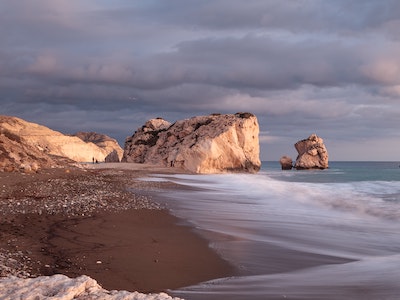
Rock of Aphrodite
Perhaps one of the most famous attractions on the island of Cyprus, the Rock of Aphrodite is an ocean outcrop surrounded by myth and legend. Said to be the birthplace of the Greek …
Rock of Aphrodite
Perhaps one of the most famous attractions on the island of Cyprus, the Rock of Aphrodite is an ocean outcrop surrounded by myth and legend. Said to be the birthplace of the Greek goddess of love, it was also supposedly put there by the Byzantine hero Basil to keep out invading Saracens. Seeming to bubble with divine energy, the waves are quite forceful, so tourists are encouraged to neither swim nor climb the rock formations. The area is also known as Petra tou Romiou, meaning 'Rock of the Roman'.
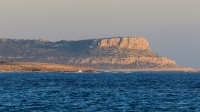
Cape Greco
The natural beauty of Cape Greco makes it one of the first locations in tourists' itineraries. The unique headland stretches out into the gorgeous blue ocean, with fascinating shap…
Cape Greco
The natural beauty of Cape Greco makes it one of the first locations in tourists' itineraries. The unique headland stretches out into the gorgeous blue ocean, with fascinating shapes peeling off from the cliffs into the shore waters. There are also trails which will appeal to hikers, exploring the surrounding national park filled with a wide variety of flora and fauna. For those more inclined to adventure, there are also opportunities for cliff jumping, diving, and swimming in sea caves.


